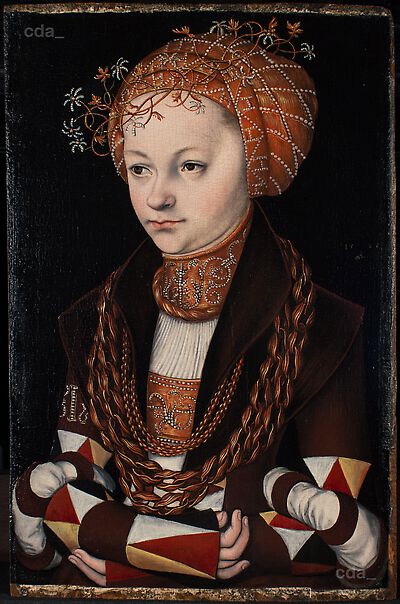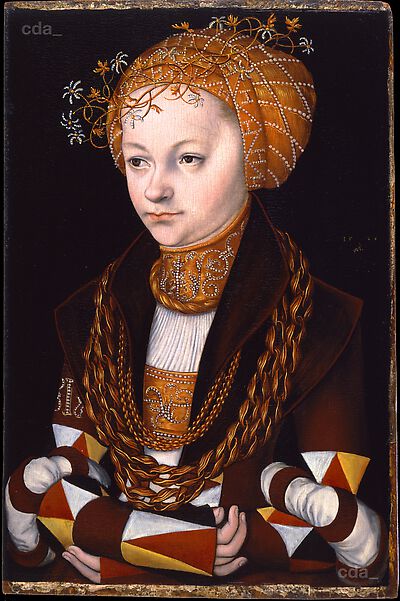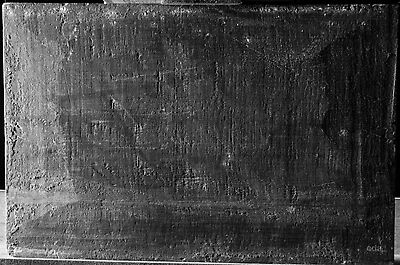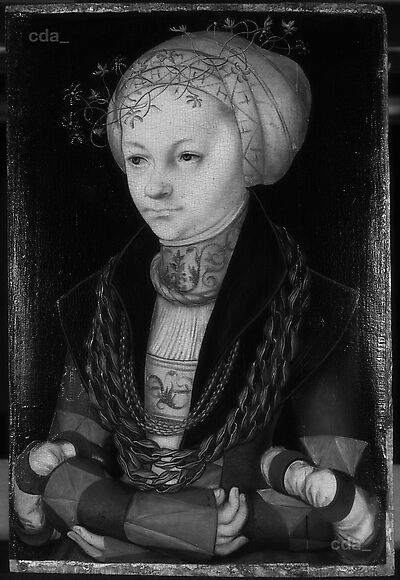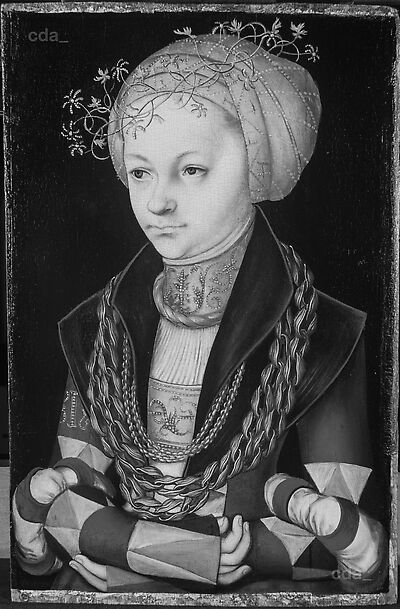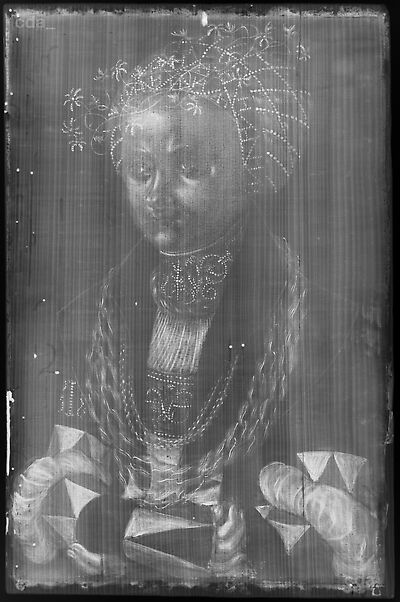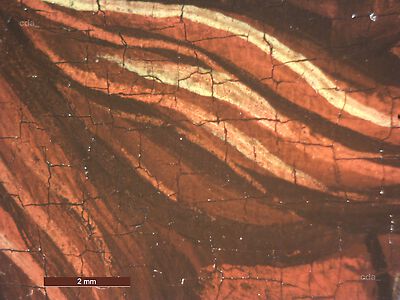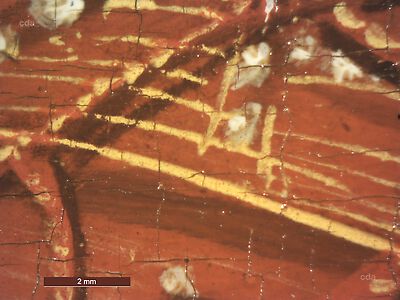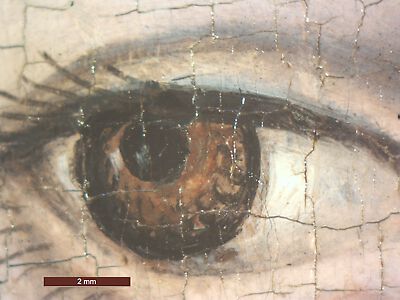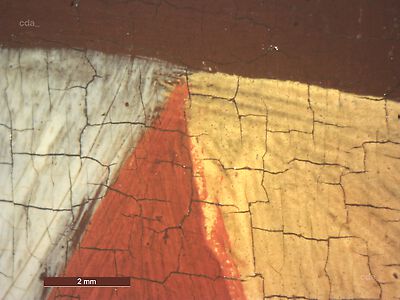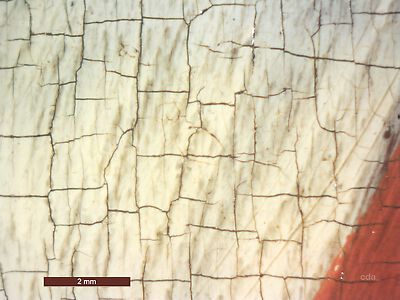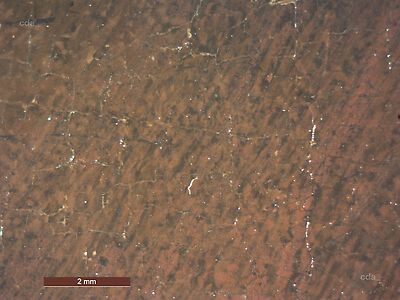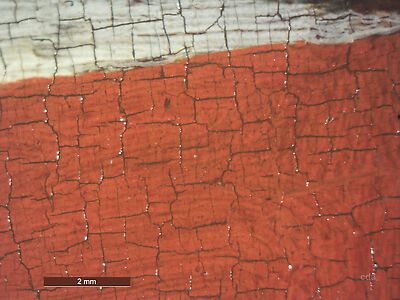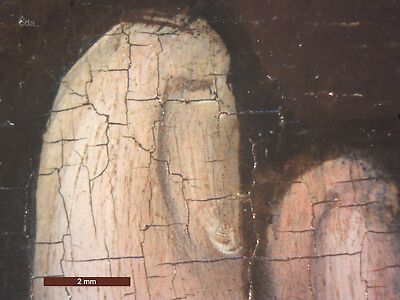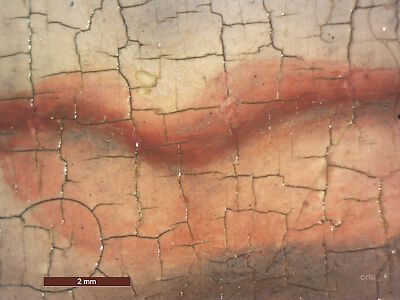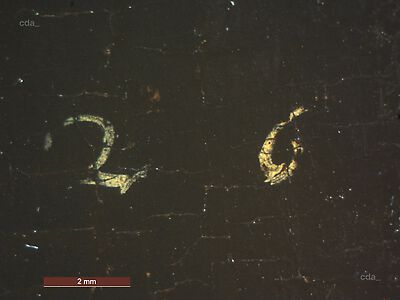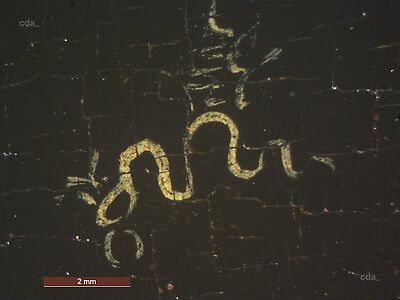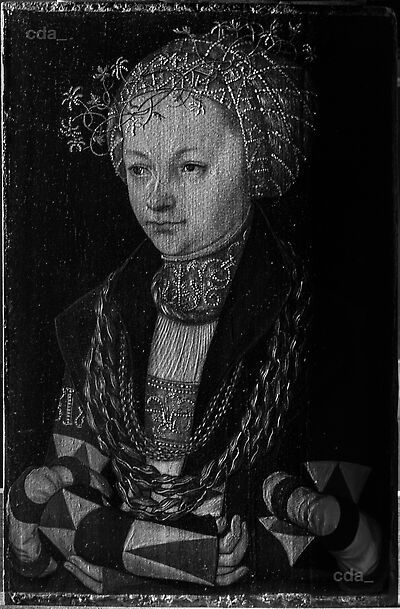Support
The following is a summary of an examination carried out in the Courtauld Institute by Mirra Berridge and Christine Wilda during the Conservation & Technology Technical Report Week, 2019.
The methods of examination used in this report include: surface examination, visible light microscopy, raking light, ultraviolet (UV) fluorescence, Infra-Red reflectography: OSIRIS IRR imaging camera (950-1700 nm), digital Infrared modified CCD Camera (750-950 nm), X-Radiography, and X-Ray Fluorescence Spectroscopy (XRF).
The support is a beech wood panel, beveled on the reverse and exhibiting tool marks from a block plane. The dimensions, 25.5cm x 38.8cm, fall within the range of the standard sizes employed in the Cranach workshop (B = 33.5-39 x 23.5-30 cm).
Ground and Imprimatura
A chalk/glue ground was identified with a priming containing lead. Calcium and lead were detected, at varying peaks, in all areas (XRF). Examination under the stereomicroscope showed the brushy application of the priming applied on top of a cream coloured ground. Scored lines are visible in the x-radiograph at the top and bottom of the panel, and interpreted in association with the excess of ground along the extreme edges of the panel may suggest that the panel was fixed in a temporary frame to facilitate the application of the ground.
Underdrawing
No underdrawing was detected in infrared which is not untypical for this production period in the Cranach workshop.
Paint Layers and Gilding
The pigments identified are typical for the palette of the first half of the 16th century and Cranach’s workshop. XRF analysis confirmed the presence of tin in the yellow areas throughout the painting including the sleeves.
Examination confirmed the authenticity of the signature on the far-right side of the painting, which was revealed after the latest restoration of the work in 2008. The craquelure patterns over the entire painting have also affected this area, at least indicating that the inscription is very old. Furthermore not only does it bear comparison to other contemporary signatures from the workshop, but a detail of the X-radiograph shows the use of an X-ray absorbent pigment. This together with evidence from XRF analysis suggest the presence of a lead containing pigment, in this case, lead tin yellow, a pigment commonly used in the Cranach workshop.
The x-radiograph also shows that the technique employed for modeling the face is closely similar to that of the ‘Portrait of Princess Sibylle of Cleve’, 1526 (Weimar, DE_KSW_G12) and other portraits of this period.
A comparison with other works painted around 1526 shows similar treatment of the chains, all painted with a clear distinguishing shape and style that match the Portrait of a Lady [US_MIA_57-10; FIN_FNG_AI316; PRIVATE_NONE-P152; RU_ESP_GE683; PL_WPM_Wil1518; DE_KSVC_M163; PRIVATE_NONE-P131; DE_SPSG_GKI30187; US_MFAH-SCBFH-1979-2 etc.]
Technical examination and historical research confirmed the attribution of the painting to Lucas Cranach the Elder. The materials and techniques used for the portrait are closely similar to those identified in previous technical studies of works by the artist, and incorporate the characteristic materials and working methods of his workshop. Evidence suggests that the portrait was painted in 1526, an assessment that is confirmed by the presence of an original date and inscription. The embroidered ‘H’ on the sitter’s headdress and the inscribed date preclude an earlier hypothesis identifying the sitter as Margaret of Anhalt. In order to solidify the argument for 1526, further research to identify the sitter is required. Betrothal portraits marked the occasion of a wedding, thus knowing when the sitter was married would potentially bring clarity to the date of this painting’s creation. The paintings object biography needs to be explored to ascertain whether it had a companion piece, as betrothal paintings were commonly paired.
- examined by Mirra Berridge
- examined by Christine Wilda
